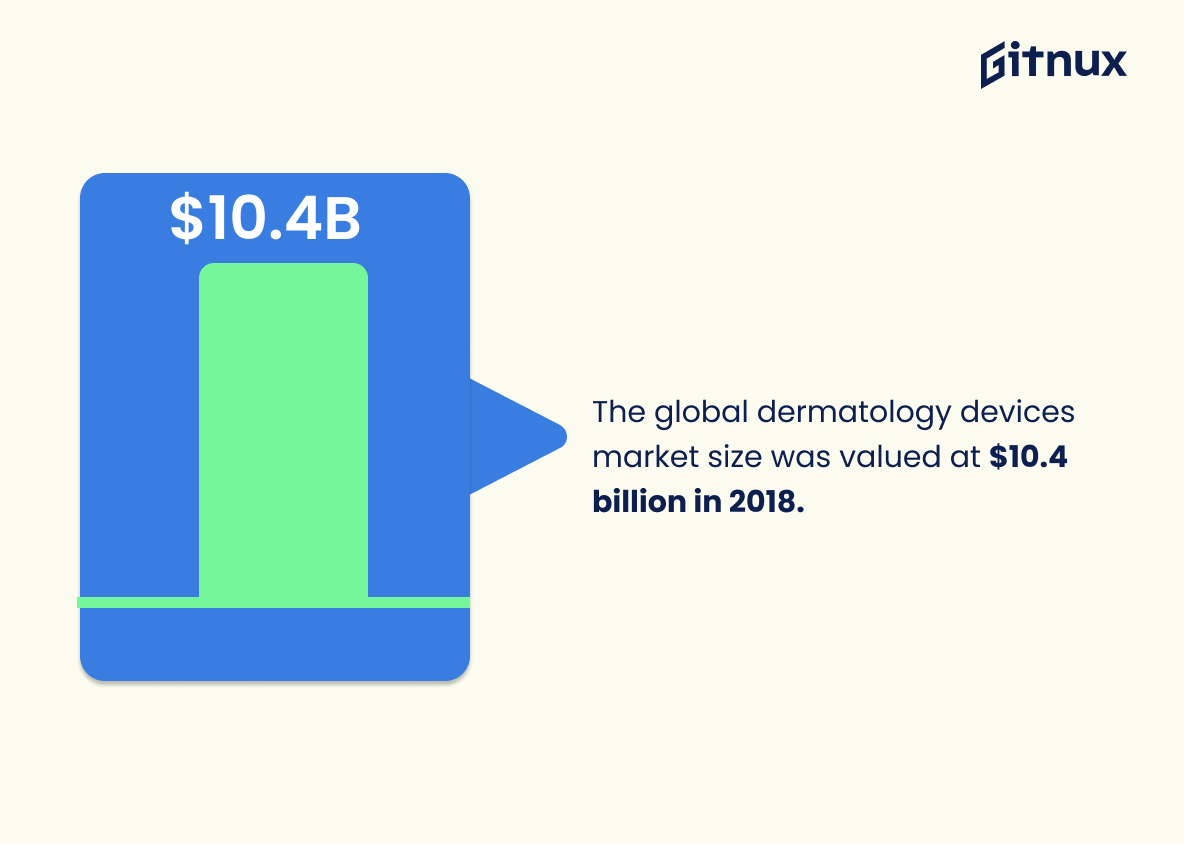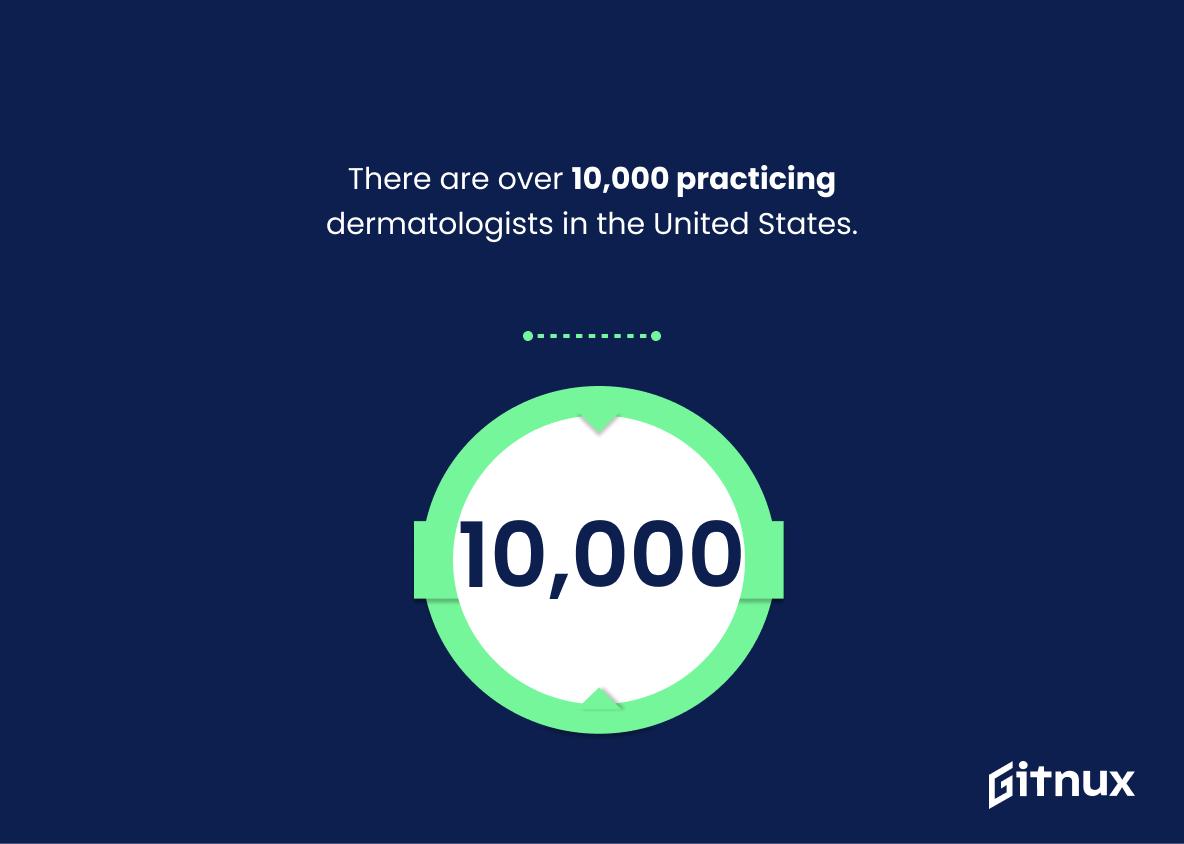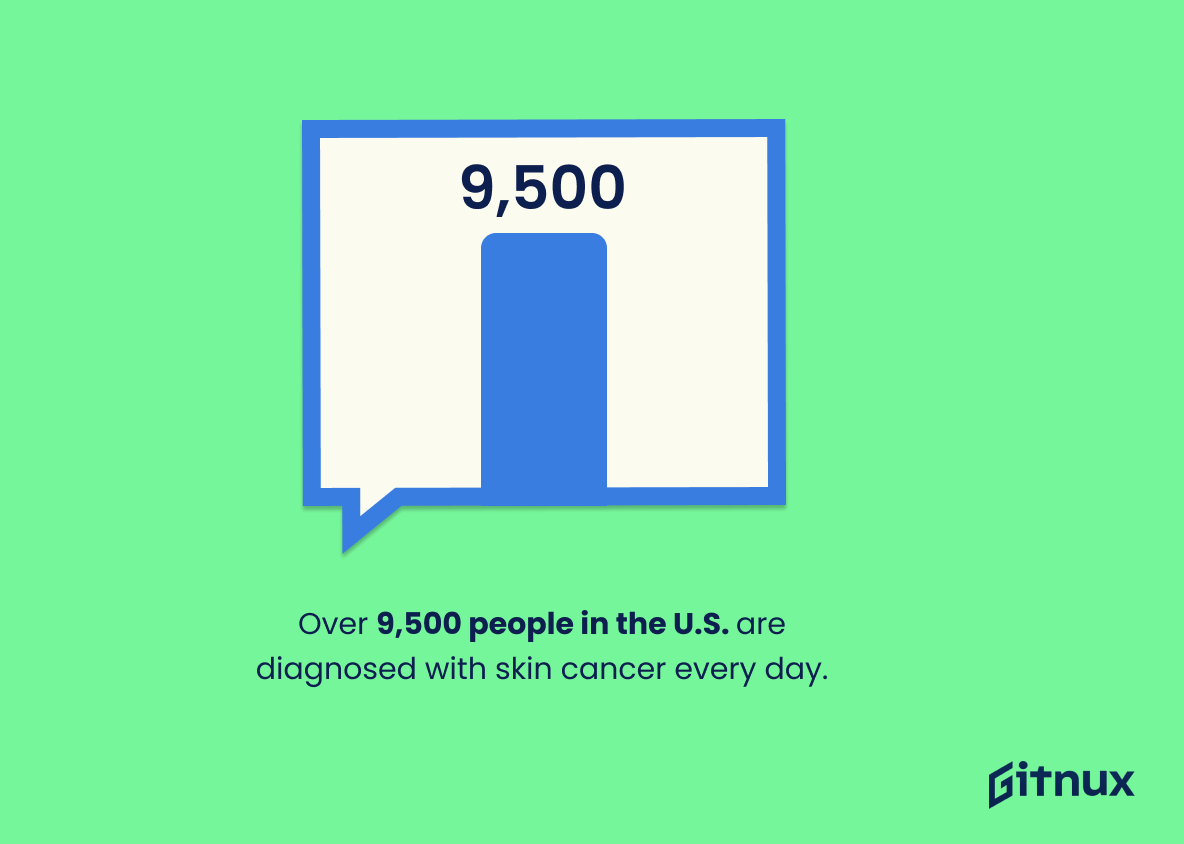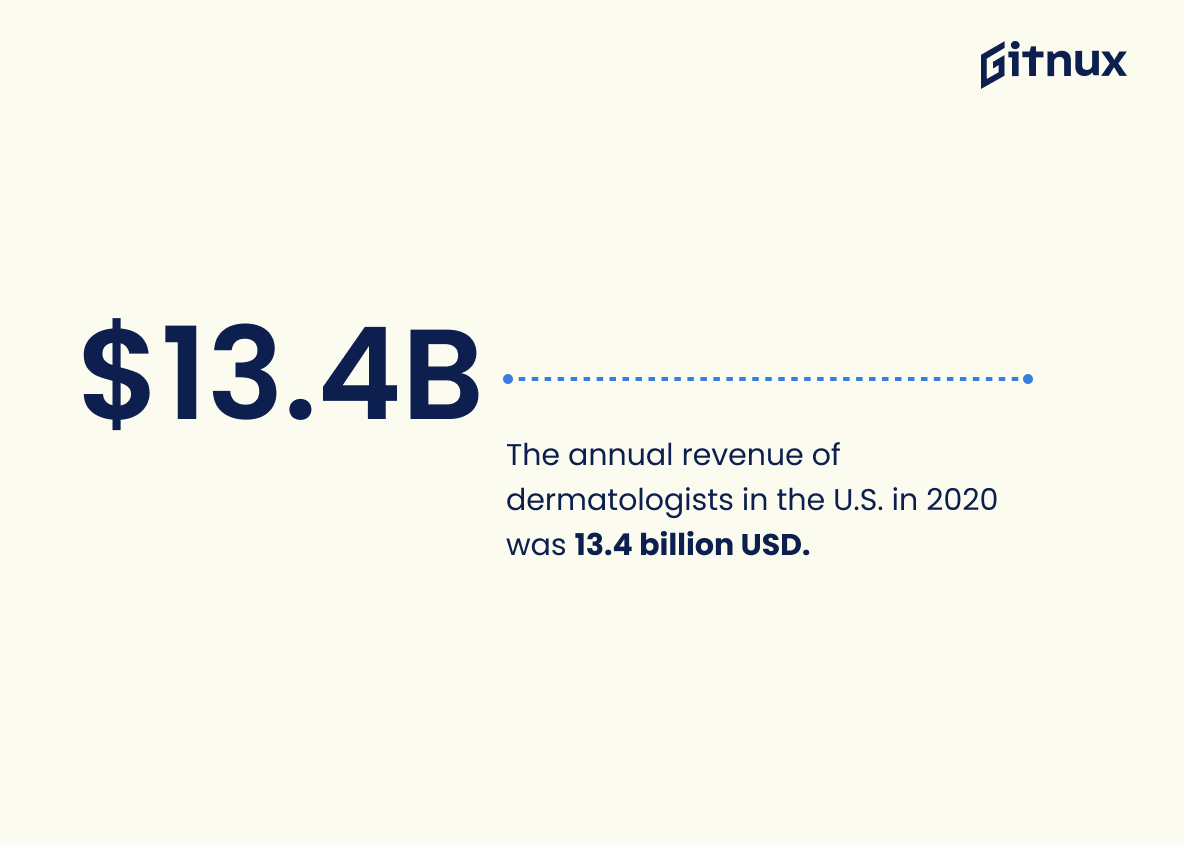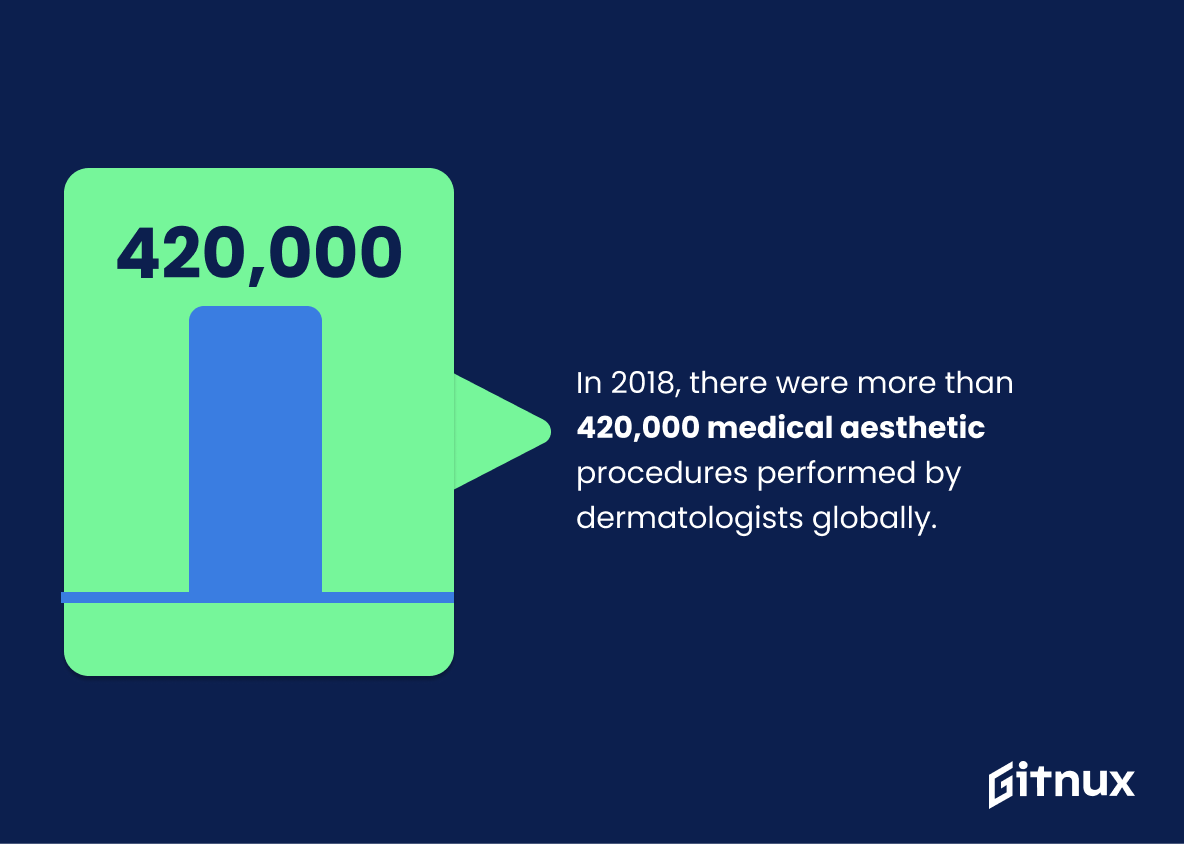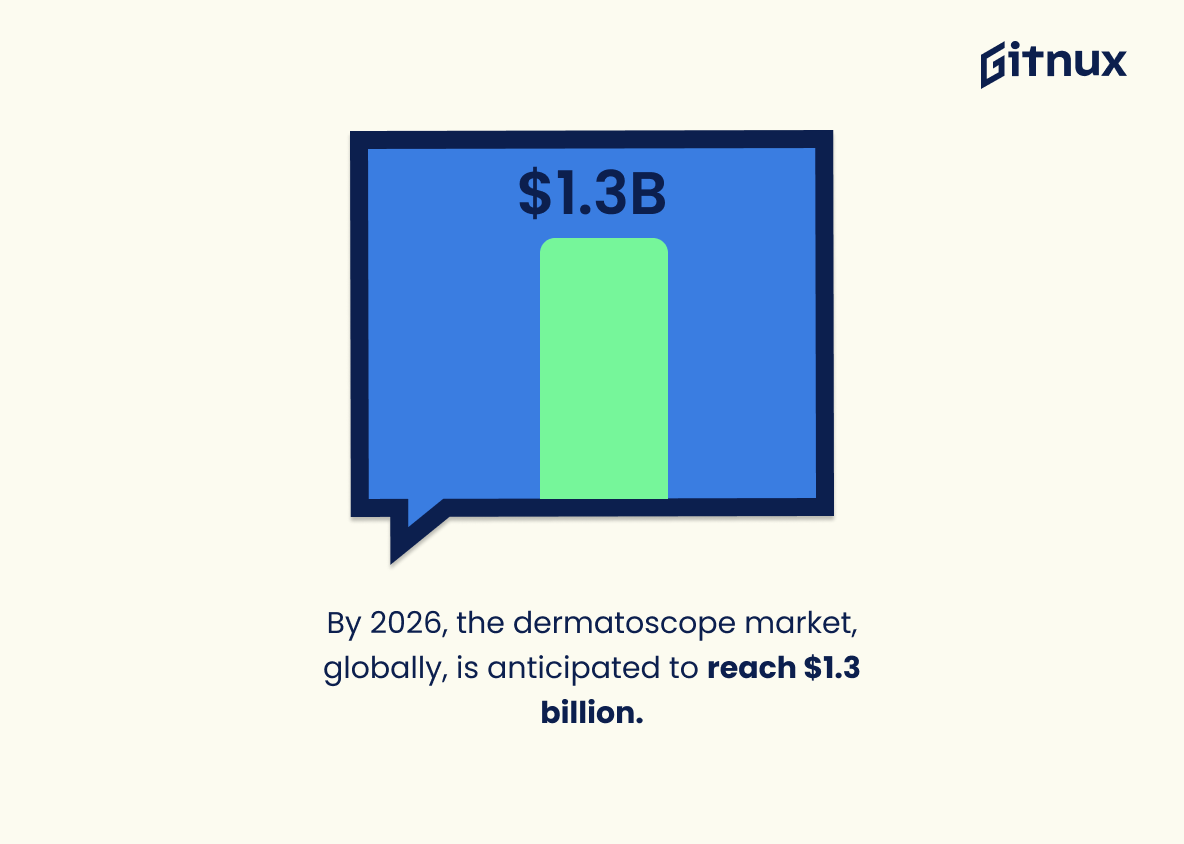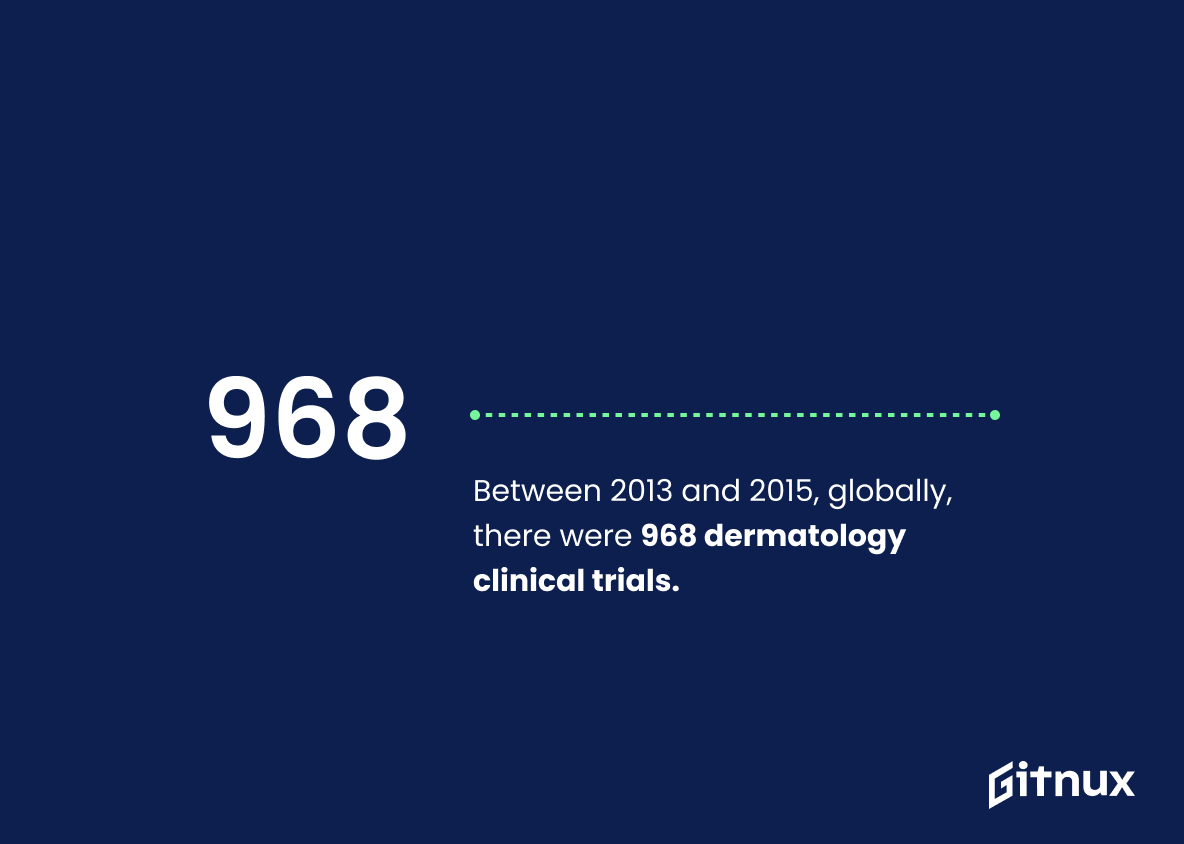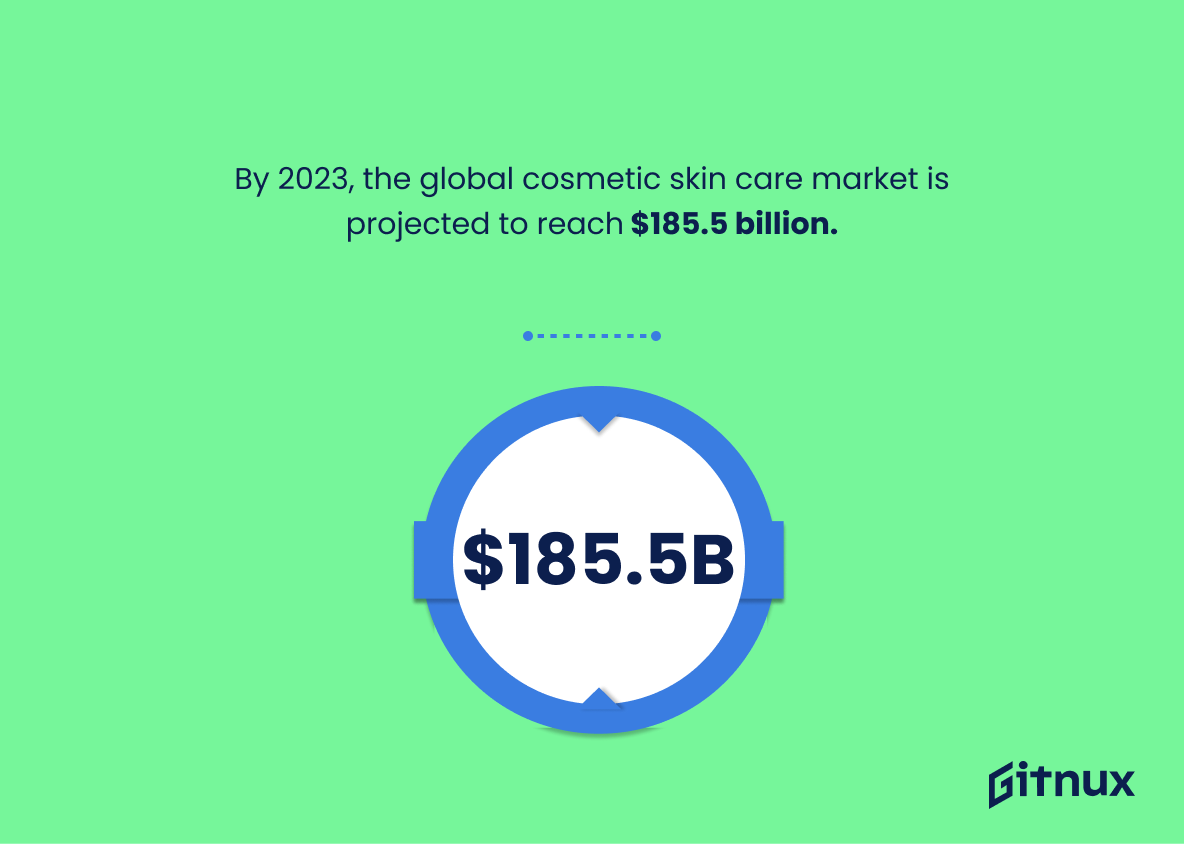Dive into the fascinating world of the Dermatology industry, a field that carries far more depth and variety than anyone might initially expect. This versatile domain that bridges health, beauty, and science has yielded a multitude of industry statistics that provide a comprehensive view of the sector’s performance, growth, and potential future trends.
Ranging from revenue details to the increasing prevalence of skin conditions, these figures shed light on the market dynamics. In this blog post, we’ll delve into these intriguing Dermatology industry statistics, offering you key insights that will enhance your understanding of this ever-evolving field.
The Latest Dermatology Industry Statistics Unveiled
The global dermatological drugs market is expected to grow from $37.57 billion in 2020 to $40.49 billion in 2021 at a compound annual growth rate (CAGR) of 7.8%.
Highlighting the projected growth of the global dermatological drugs market wonderfully underscores its explosive dynamism and potential profitability. The increase from $37.57 billion in 2020 to an anticipated $40.49 billion in 2021, at a compelling 7.8% Compound Annual Growth Rate (CAGR), paints a picture of a high-performing segment within the medical industry.
This prospective surge not only speaks to the innovative advancements in skincare treatments but also hints at an escalating global emphasis on skin health. For readers looking to navigate the ever-evolving dermatology landscape, such a statistic serves as a powerful navigational beacon, illuminating trends, delineating market trajectories and promising robust investment opportunity.
North America is the largest region accounting for 41.4% of the global dermatology drugs market in 2020.
Highlighting North America’s substantial contribution of 41.4% to the global dermatology drugs market provides a powerful perspective on the geographical distribution of this industry in 2020. It fires up an intriguing thought – the region’s advanced healthcare infrastructure and high expenditures on skincare could be propelling factors for these substantial market shares. It paints an impressive image of North America’s dominance, potentially steering investors, medical practitioners, and pharmaceutical companies to focus on their strategies in this region.
The dermatological therapeutics market is expected to reach $34.5 billion by 2027.
Painting a broader picture, the meteoric rise of the dermatological therapeutics market, with expectations to soar to an astounding $34.5 billion by 2027, offers a riveting narrative of growth and opportunity within the dermatology industry. This compelling figure suggests an accelerating trend towards investing significantly in skin care research, innovative therapies, and cutting-edge technologies.
It serves concretely as a testament to the booming vitality of this industry, hinting towards the potential intrigues that could lay ahead in the pursuit of healthier skin around the globe. Moreover, it subtly hints at the shifting dynamics within the health care sector, indicating the escalating value of specialty areas to the global health economy. This resounding figure breathes anticipation into the blog post, highlighting the essence of why the dermatological industry warrants attention and exploration.
The global dermatology devices market size was valued at $10.4 billion in 2018.
Delving into the world of dermatology devices showcases a realm of high dollar figures. In the year 2018, this robust market was worth an eye-opening $10.4 billion globally. Highlighting such a hefty figure in a blog post about Dermatology Industry Statistics certainly underscores its immense scope. With this impressive market value, one can not only grasp the significance and flourishing nature of this sector, but also gain a perspective of its potential for return on investment.
Furthermore, it offers a glimpse into the wide-reaching financial playing field in which dermatology device manufacturers, healthcare businesses, and doctors are intertwining. Understanding such market values can aid in strategic planning, offering significant insight for anyone involved or interested in this particular area of the health industry.
There are over 10,000 practicing dermatologists in the United States.
Highlighted in the landscape of the dermatology industry, the presence of over 10,000 practicing dermatologists across the United States unfurls significant implications. This collective body of professionals mirrors a vanguard in skin care, health and aesthetic services, driving the industry economy and readily filling in the demand for skin-related healthcare.
Interwoven in the dynamics of patient care, this number testifies to the scale, potential and scope of the dermatology market. Providing insights into the overall resource availability, this statistic serves as a barometer for industry stability and growth. Furthermore, it subtly traces the path to understanding market saturation, manpower distribution, and influence of this sector on national health standards.
Acne is the most common skin condition in the U.S., affecting up to 50 million Americans annually.
Highlighting that a staggering 50 million Americans battle acne every year underscores the sheer scale and significance of the Dermatology industry in America. The fact that acne tops the list of skin conditions illuminates a compelling opportunity for growth, intervention, and innovation within the sector.
This number not only reflects the immense patient pool that warrants attention but also underscores the potential market for both pharmaceutical and non-pharmaceutical acne treatments. Evidently, the dermatology industry is indispensable to American healthcare, zooming the lens onto not just the medical but also the economic and social facets of managing skin conditions.
Over 9,500 people in the U.S. are diagnosed with skin cancer every day.
Radiating the stark reality of skin cancer, over 9,500 daily diagnoses in the U.S. attest to the urgent and escalating need for the dermatology industry. Like a clarion call, these numbers underscore a tremendous demand for dermatological expertise and solutions, painting a broad, yet intricate, picture of the battlefield where dermatologists are leading the fight against skin cancer.
This data presents both an alarming challenge and an opportunity for growth, innovation, and improvement within the dermatology industry. Beyond informing the scale of the problem, these figures invite stakeholders in dermatology, be it health professionals, researchers, or investors, to reimagine strategies and enhance their commitments to combating this prevalent health foe.
The annual revenue of dermatologists in the U.S. in 2020 was 13.4 billion USD.
“Shining a light on the impressive strength and financial vigor of the dermatology industry, the striking figure of 13.4 billion USD unveils the enviable annual revenue that dermatologists generated in the U.S. alone during 2020. As we delve deeper into dermatology industry statistics, it’s pivotal to weave in this phenomenal revenue illustration as it sculpts a vivid picture of the sector’s economic performance and many avenues to success that echo throughout this medical field.
Broadening our understanding of its economic potential, this significant figure also points towards the industry’s adaptability and resilience in the face of global challenges. Meanwhile, it casts a foresight for new entrants, investors and stakeholders about profitable opportunities vesting in the sector. In tracking this revenue trail, we begin to perceive the full impact of the dermatology industry on the U.S economy, thereby adding depth to our discussion.”
In 2018, there were more than 420,000 medical aesthetic procedures performed by dermatologists globally.
Highlighting the staggering number of more than 420,000 medical aesthetic procedures that dermatologists performed globally in 2018, one can deepen the understanding of the sheer capacity and reach of the dermatology industry. This data punctuates the growing trend towards procedures that not only address health concerns but also aspire for aesthetic enhancement, pivoting the industry toward an increasingly prevalent beauty-health amalgamation.
As we disseminate such numbers, we foreground the research, innovation, and expertise the industry contributes and continues to evolve with. This eventually paints a picture of an industry that is expanding and influencing beauty standards as well as healthcare globally.
The number of skin disease patients exceeded 150 million in China by 2018.
In the expansive world of Dermatology Industry Statistics, very few figures echo as loudly as the one stating that by 2018, skin disease patients in China exceeded a staggering 150 million. Picture every man, woman, and child in nearly half of the United States. That’s the current scale of skin disease in China and it paints a profound picture of the enormous potential for growth and the immense challenges present in the dermatology sector.
Consequently, this statistic ties not only into the massive demand for dermatology services, but also emphasises on the need for further research, innovation, and investment in this industry. By pondering this number, one can grasp the epic demand-supply dynamics at play which could potentially sculpt the future of world dermatology industry.
1 out of 3 cancers diagnosed is skin cancer.
Highlighting the significant fact that one out of every three diagnosed cancers is a skin cancer amplifies the pivotal role the Dermatology Industry plays in healthcare. With this revelation, it’s unmistakable that the Dermatology Industry doesn’t just deal with aesthetic and superficial skin issues; it is at the forefront of fighting one of the most frequent types of cancer.
This statistic underscores the immense responsibility on dermatologists and related industries, elucidating that their services extend beyond traditional ‘skin-deep’ treatments to critical, life-saving interventions. Furthermore, it foreshadows a burgeoning demand for advanced dermatological treatments, driving innovation and growth within the industry.
By 2026, the dermatoscope market, globally, is anticipated to reach $1.3 billion.
Painting a vision for the future of the dermatology industry, we journey towards the horizon of 2026. An imagination filled with $1.3 billion, shimmering as the expected worth of the global dermatoscope market. This serves as a beacon indicating the immense monetary growth prospective and investment attraction within the dermatology field.
This monetary outlook also echoes the anticipated rise in technological advancements, increased adoption of dermoscopes by dermatologists, and a global drive towards skin health. It further underlines the escalating demand for dermatoscopic equipment as clinicians worldwide respond to growing skin disease prevalence, inciting an exciting domino effect for related services, jobs, and education in the dermatology industry.
Between 2013 and 2015, globally, there were 968 dermatology clinical trials.
Delving into the exciting world of Dermatology Industry Statistics, an especially interesting figure stands out. Between 2013 and 2015, the globe witnessed an impressive 968 dermatology clinical trials. This nugget of information is not just a number. It radiates significance far beyond its face value; it is essentially the pulse of innovation in this industry.
This figure exposes the industry’s relentless pursuit of breakthroughs and insights on dermatological conditions and their possible solutions. It underscores the relentless commitment to improve the quality of life for those battling skin-related health challenges. Each clinical trial represents a beacon of potential, a new door that may lead to game-changing therapies or even cures for a variety of skin diseases.
Moreover, it also furnishes a peek into the industry’s financial health and level of investment in R&D. In a sense, it also stamps global relevance on dermatology, reiterating its importance in the healthcare sector at large. Undeniably, the road to unearthing the future of dermatology is indeed, paved with the milestones of these multitude of trials.
The dermatology drugs market in the Asia Pacific is expected to grow at a CAGR of 8.5% through 2025.
The projected 8.5% CAGR growth in the dermatology drugs market in the Asia Pacific through 2025 is a crucial nugget of information. It stands as a beacon of opportunity, signaling hefty investment potential in this region. Not only does it pinpoint the Asia Pacific as a lucrative and promising market, but it also reveals a rising local demand for dermatological treatments and drugs.
This growth rate also underscores a shift in awareness and priorities amongst consumers, recognizing the importance of skin care health and treatments. Therefore, as we dissect the global dermatology industry, observing such expansion trends helps pinpoint market hotspots and keen areas for research, investment, and business expansion.
By 2023, the global cosmetic skin care market is projected to reach $185.5 billion.
Delving into the fascinating world of Dermatology Industry Statistics, when we consider the projection that by 2023, the global cosmetic skin care market will ascend to the astronomical value of $185.5 billion, it paints a compelling picture. This promising outlook not only underscores the escalating interest in skincare worldwide but also signifies the immense opportunities available for innovators, investors, and businesses within the dermatology realm.
Additionally, it echoes the increasing social emphasis on aesthetics and healthy skin, further exciting market potential in cosmetic research, product development, and dermatological treatments. Therefore, this formidable statistic serves as a buoyant beacon for industries orbiting around dermatology, coaxing them to delve into unchartered territories for future growth.
Dermatology has been one of the fastest-growing specialties in the telehealth sector since the onset of the COVID-19 pandemic.
Highlighting the explosive growth of dermatology in the telehealth sector since the launch of the COVID-19 pandemic paints a vivid picture of the transformative changes sweeping through the dermatology industry. Not only does it underline dermatology’s adaptability in crisis times, it also underscores the field’s commitment to continuing patient care even in tumultuous circumstances.
This data nugget serves as a pulsing evidence of the emerging capabilities and potential growth areas within the dermatology industry, which in turn speaks volumes about the tremendous opportunities available for practitioners, investors, technology developers, and other stakeholders. Furthermore, it prompts important discussions around the long-term implications of telemedicine in modifying patient experience as well as the healthcare industry’s service delivery landscape.
The prevalence of psoriasis, a common dermatological condition, is 2-3% of the world population.
Unveiling the veil off dermatology industry statistics, the spotlight falls on psoriasis, known as a common skin anomaly commanding the stage with a notable presence in 2-3% of the global populace. This factor not just spotlights Psoriasis as a key player influencing the direction of the dermatology industry, but also emphasizes its hefty role in framing the course of research, treatment advancements and specialized products. Shining light on this figure presses upon the consistent demand for novel solutions, underlining the potentially large market that seeks relief from this condition, and in turn, fueling the engine of growth within the industry.
A 2022 report indicates that the global dermatology diagnostic devices market is expected to reach $3.5 billion by 2027.
This captivating statistic paints an exciting vista of the future landscape for the global dermatology diagnostic devices market. By forecasting a leap to $3.5 billion by 2027, it heralds a dynamic burst in growth and potential opportunities within the industry. An understanding of this vision doesn’t only enlighten readers about the substantial value expected to infuse this sector, it also underscores the skyrocketing demand for dermatological diagnostic solutions.
Essentially, it signals that innovative technologies, investment, research, and development are the driving forces poised to chart an upward trajectory in this sphere. This certainly puts things into perspective for stakeholders eager to track potential evolutionary trends and growth levers in the dermatology industry.
Conclusion
In closing, the data and insights provided in our exploration of the dermatology industry statistics underline the increasing significance and growth of this sector. A rise in skin conditions, driven by factors like increased sun exposure, stress and changes in lifestyle, combined with developing technology and advancements in treatment methods, have all contributed to this robust industry expansion.
With continuous innovation and research, the dermatology industry shows an overwhelming potential per the statistical trends. It remains a crucial field not only in providing aesthetic and restorative solutions but also in ensuring overall skin health and disease prevention. It’s an exciting time to be involved or invest in this vital sector – the statistics don’t lie.
References
0. – https://www.www.reportlinker.com
1. – https://www.www.globenewswire.com
2. – https://www.clinicaltrials.gov
3. – https://www.www.statista.com
4. – https://www.www.alliedmarketresearch.com
5. – https://www.www.aad.org
6. – https://www.www.marketwatch.com
7. – https://www.www.grandviewresearch.com
8. – https://www.www.who.int
9. – https://www.www.beckershospitalreview.com
10. – https://www.datausa.io
11. – https://www.www.theasa.org
12. – https://www.www.precedenceresearch.com



